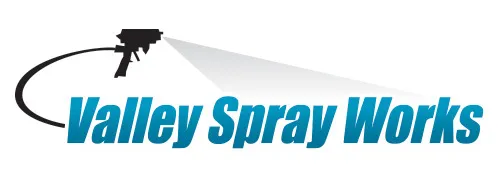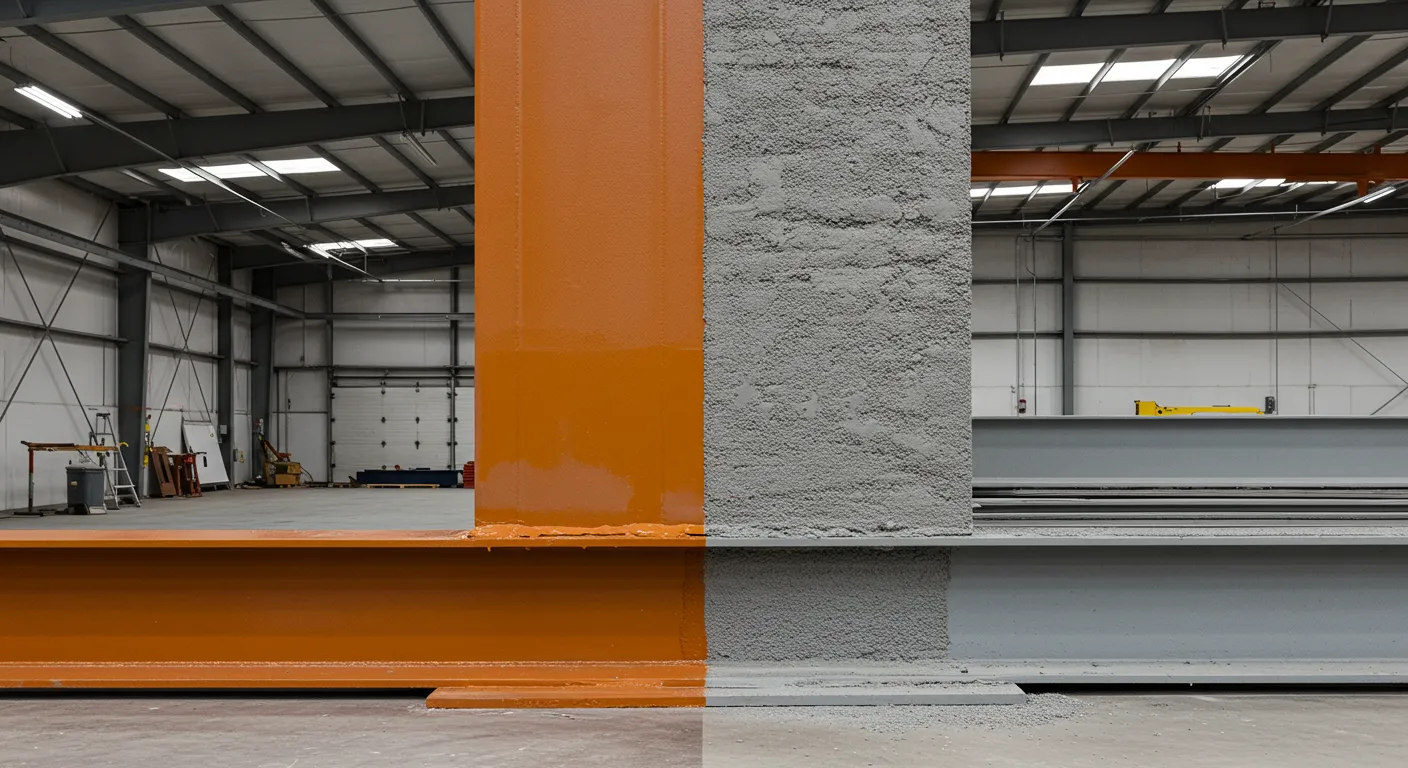Fire protection is a key consideration in construction, particularly for commercial and industrial buildings. In Heyburn, ID, both intumescent paint and traditional fireproofing methods are used to meet fire safety regulations. Each option has distinct characteristics, advantages, and applications. This article explores how they compare in terms of effectiveness, installation, maintenance, and cost.
What Is Intumescent Paint?
Intumescent paint is a fire-resistant coating that expands when exposed to high temperatures, forming a protective char layer. This insulation delays heat transfer, preventing structural elements from reaching critical temperatures. It is commonly applied to steel, wood, and other materials requiring fire resistance.
How Intumescent Paint Works
- Application: It is sprayed or brushed onto surfaces.
- Reaction to Heat: At high temperatures, it expands up to 50 times its original thickness.
- Thermal Insulation: The expanded char layer acts as a barrier, reducing heat exposure.
- Fire Resistance Rating: Depending on the thickness, it can provide up to 120 minutes of fire protection.
Traditional Fireproofing Methods
Traditional fireproofing techniques have been used for decades to enhance fire resistance. These methods include:
- Cementitious Fireproofing – A spray-applied mixture of cement, gypsum, and other materials.
- Fireproof Boards – Prefabricated panels designed for fire resistance.
- Encasement Systems – Steel and other structural components are enclosed in fire-resistant materials.
- Intumescent Wraps – Applied around piping and ducts for additional protection.
Each of these approaches provides passive fire protection by insulating materials from high temperatures.
Comparing Intumescent Paint and Traditional Fireproofing
Effectiveness in Fire Resistance
- Intumescent Paint: Expands under heat to create an insulating barrier, slowing fire spread.
- Cementitious Fireproofing: Provides thick insulation but may crack over time.
- Fireproof Boards: Effective for compartmentalization but require precise installation.
- Encasement Systems: Offers strong fire resistance but adds structural weight.
Aesthetic Considerations
- Intumescent Paint: Maintains architectural integrity since it is applied as a thin coating.
- Cementitious Fireproofing: Rough finish, often requiring an additional layer for aesthetics.
- Fireproof Boards: Can be integrated into designs but may not blend seamlessly.
- Encasement Systems: Bulky and may alter structural appearance.
Installation Process
- Intumescent Paint: Simple application with minimal disruption to other construction processes.
- Cementitious Fireproofing: Requires specialized equipment and may produce dust.
- Fireproof Boards: Requires precise cutting and secure installation.
- Encasement Systems: Labor-intensive and time-consuming.
Maintenance Requirements
- Intumescent Paint: Requires periodic inspection but generally low maintenance.
- Cementitious Fireproofing: Prone to cracking and may need repairs over time.
- Fireproof Boards: Vulnerable to damage and must be replaced if compromised.
- Encasement Systems: Durable but difficult to modify once installed.
Cost Considerations
| Fireproofing Method | Initial Cost | Long-Term Maintenance |
| Intumescent Paint | Moderate | Low |
| Cementitious Fireproofing | Low | High(cracking repairs) |
| Fireproof Boards | High | Moderate |
| Encasement Systems | High | Low |
Choosing the Right Fireproofing Method in Heyburn, ID
Heyburn’s building regulations and environmental conditions play a role in selecting a fireproofing method. Factors such as building type, aesthetic preferences, budget, and long-term maintenance should guide the decision.
For projects requiring discreet fire protection with minimal impact on design, intumescent paint is a preferred choice. For industrial settings where cost efficiency is a priority, cementitious coatings may be more suitable.
Fireproofing Solutions for Your Project
Whether you’re constructing a new building or upgrading fire protection in an existing structure, selecting the right method is critical. Valley Spray Works offers professional intumescent paint application and consultation on other fireproofing solutions. Contact us at (208) 539-5281 or email [email protected] to discuss the best option for your project in Heyburn, ID.
FAQs
How long does intumescent paint last?
Intumescent paint can last for decades if properly applied and maintained. Regular inspections help ensure its effectiveness.
Is intumescent paint waterproof?
Some formulations offer moisture resistance, but additional protective coatings may be necessary in high-humidity environments.
Can intumescent paint be applied over existing coatings?
Yes, but the surface must be prepared properly to ensure adhesion and effectiveness.
How does intumescent paint compare to spray-applied cementitious fireproofing in terms of weight?
Intumescent paint is significantly lighter, making it ideal for applications where weight is a concern.
What maintenance is required for intumescent coatings?
Regular inspections to check for damage or wear, with touch-ups applied as needed.
Are there regulations in Heyburn, ID, regarding fireproofing methods?
Yes, local building codes specify fireproofing requirements based on building type and occupancy.
Can traditional fireproofing methods be combined with intumescent coatings?
Yes, hybrid approaches are sometimes used for enhanced fire protection in critical areas.
How thick does intumescent paint need to be applied?
The required thickness depends on fire rating requirements and material type. Specifications should be followed based on building codes and manufacturer guidelines.
Is intumescent paint suitable for residential buildings?
Yes, it can be used in homes for added fire resistance, particularly on structural steel and wood components.
How can I get a quote for fireproofing services in Heyburn, ID?
Contact Valley Spray Works at (208) 539-5281 or email [email protected] for a consultation and pricing information.



